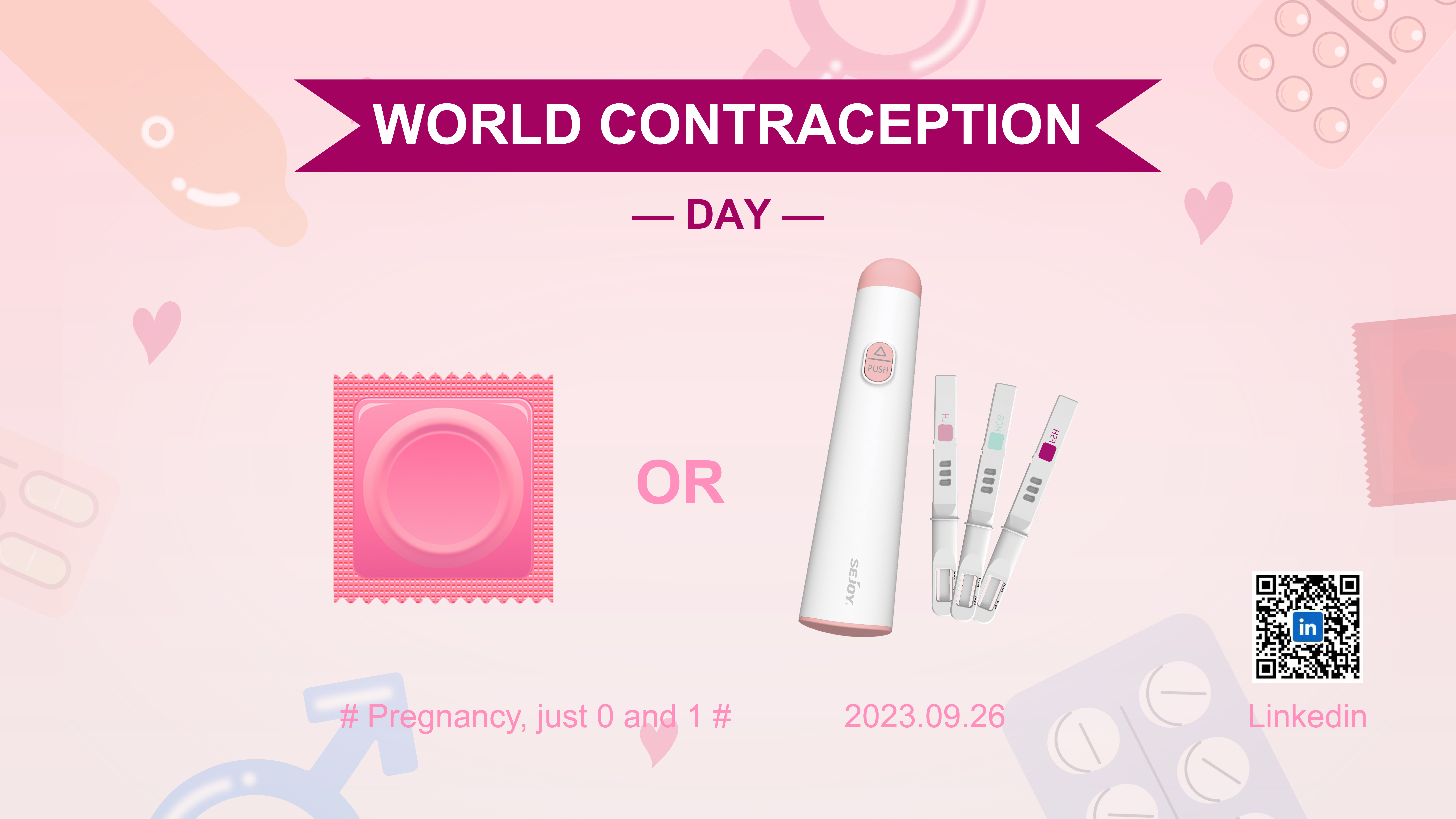September 26th is World Contraception Day, an international commemorative day aimed at raising young people’s awareness of contraception, promoting responsible choices for their sexual behavior and reproductive health, increasing safe contraception rates, improving reproductive health education levels, and promoting their reproductive and sexual health. September 26, 2023 is the 17th World Contraception Day, and this year’s promotional theme is “Scientific Contraception Protects Eugenics and Childhood”, with the vision of “Building a World Without Unexpected Pregnancy”.
The predecessor of World Contraception Day was the “Day of Remembrance for the Protection of Unexpected Pregnancy of Minors” initiated by Latin America in 2003. Since then, it has received positive responses from multiple countries and was officially named “World Contraception Day” in 2007 by Bayer Healthcare Co., Ltd. and six international non-governmental organizations (NGOs). Currently, it has received support from 11 international non-governmental organizations and scientific and pharmaceutical groups worldwide. China also joined the promotion of World Contraception Day in 2009.
With the development of scientific medicine and the popularization of sexual knowledge, sex and contraception are no longer a taboo topic. In recent years, sex education courses, sex science summer camps, etc. have gradually entered domestic and foreign universities to discuss topics related to love and sex with college students.
Why use contraception?
According to the World Health Organization, 222 million women worldwide who do not want to conceive or wish to delay pregnancy have not used any contraceptive methods. Therefore, obtaining contraceptive information will help women better engage in family planning and improve their health status. Induced abortion or even repeated miscarriage caused by unexpected pregnancy can cause significant and long-term harm to women’s physical and psychological well-being, and also cast unnecessary shadows on their already happy love and future marital life. Bleeding, injury, infection, pelvic inflammatory disease, infertility… which one can you afford to hurt?
Common contraceptive methods
1. Condoms (strongly recommended) are safe, simple, and effective contraceptive tools that prevent sperm from entering the vagina and prevent contact with the egg, thus achieving the goal of contraception. Advantages: The most widely used contraceptive devices; If used correctly, the contraceptive rate can reach as high as 93% -95%; It can prevent the transmission of diseases through sexual intercourse, such as gonorrhea, syphilis, AIDS, etc. Disadvantage: Wrong model selection, easy to slip and fall into the vagina.
2. The intrauterine device (IUD) is a safe, effective, simple, economical, and reversible contraceptive tool, but its function is not conducive to the implantation and development of fertilized eggs, thus achieving the goal of contraception. It is the contraceptive method chosen by most women born in the 1960s and 1970s. Advantages: Depending on the type of device placed, it can be used for 5 to 20 years at a time, making it economical, convenient, and safe. Remove to restore fertility. Disadvantages: May cause side effects such as increased menstrual blood or irregular menstruation, making it more suitable for women who have given birth.
3. Hormonal contraception: Steroid contraceptive pills include oral contraceptives, contraceptive needles, subcutaneous implants, etc. Short acting oral contraceptives: For example, Mafulong and Yousiming, the method of use is to take the first tablet on the first day of menstruation, take it continuously for 21 days, and take the second cycle of medication after stopping for 7 days. Its function is to inhibit ovulation, and the effective rate of correct use is close to 100%. Subcutaneous implant: It can be placed within 7 days of the start of the menstrual cycle, in a fan-shaped shape on the subcutaneous side of the left upper arm. After 24 hours of placement, it exerts contraceptive effects. The implant is placed once for 3 years, with minimal side effects and an effective rate of over 99%.
4. Sterilization includes tubal ligation and vas deferens ligation. Advantages: Once and for all, no side effects. Male ligation does not affect sexual ability, while female ligation does not prematurely enter menopause. Disadvantages: A minor surgery is required and the wound may experience some pain. If it is necessary to have another child, restoring fertility is not easy.
Post time: Sep-26-2023


